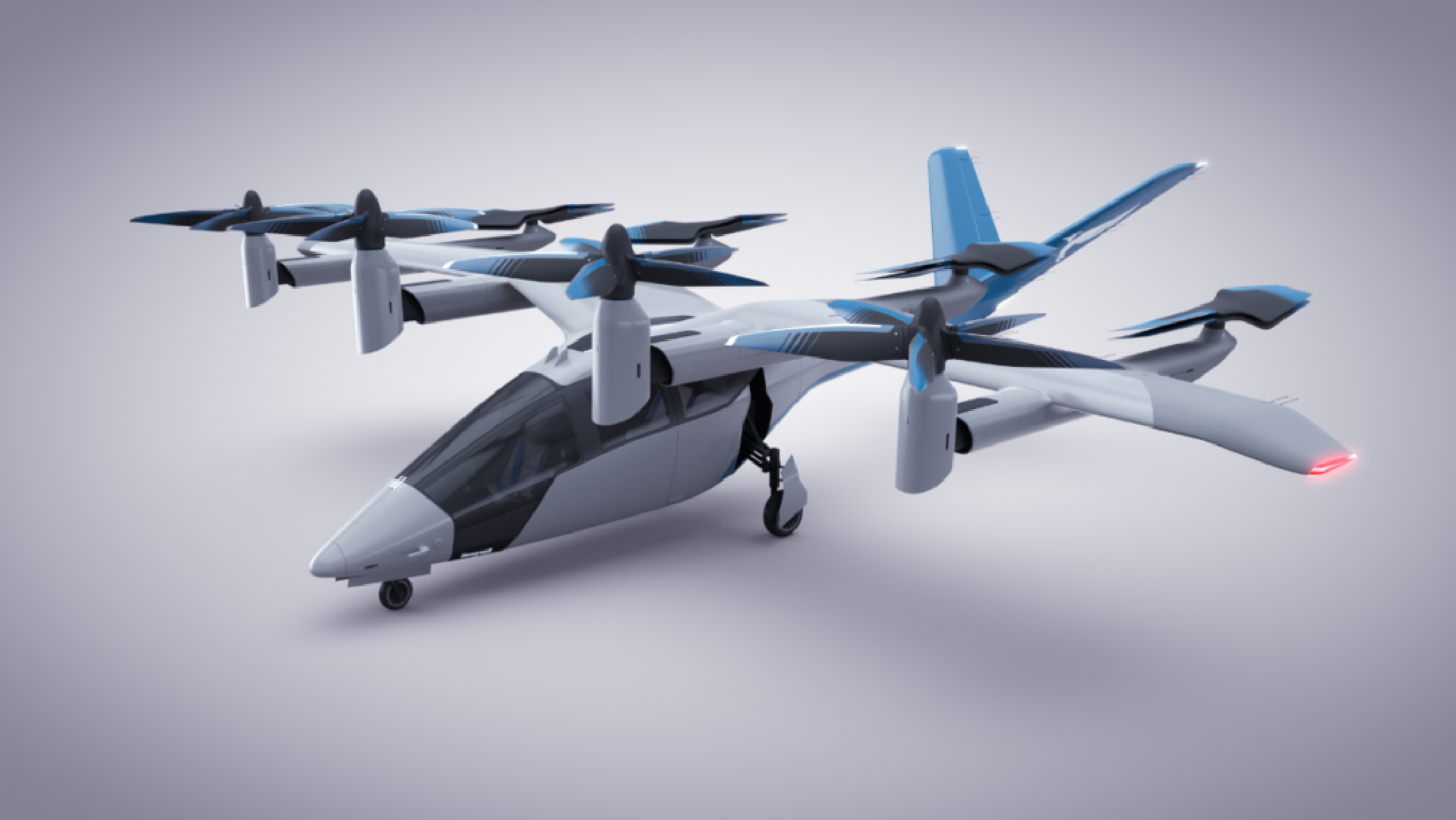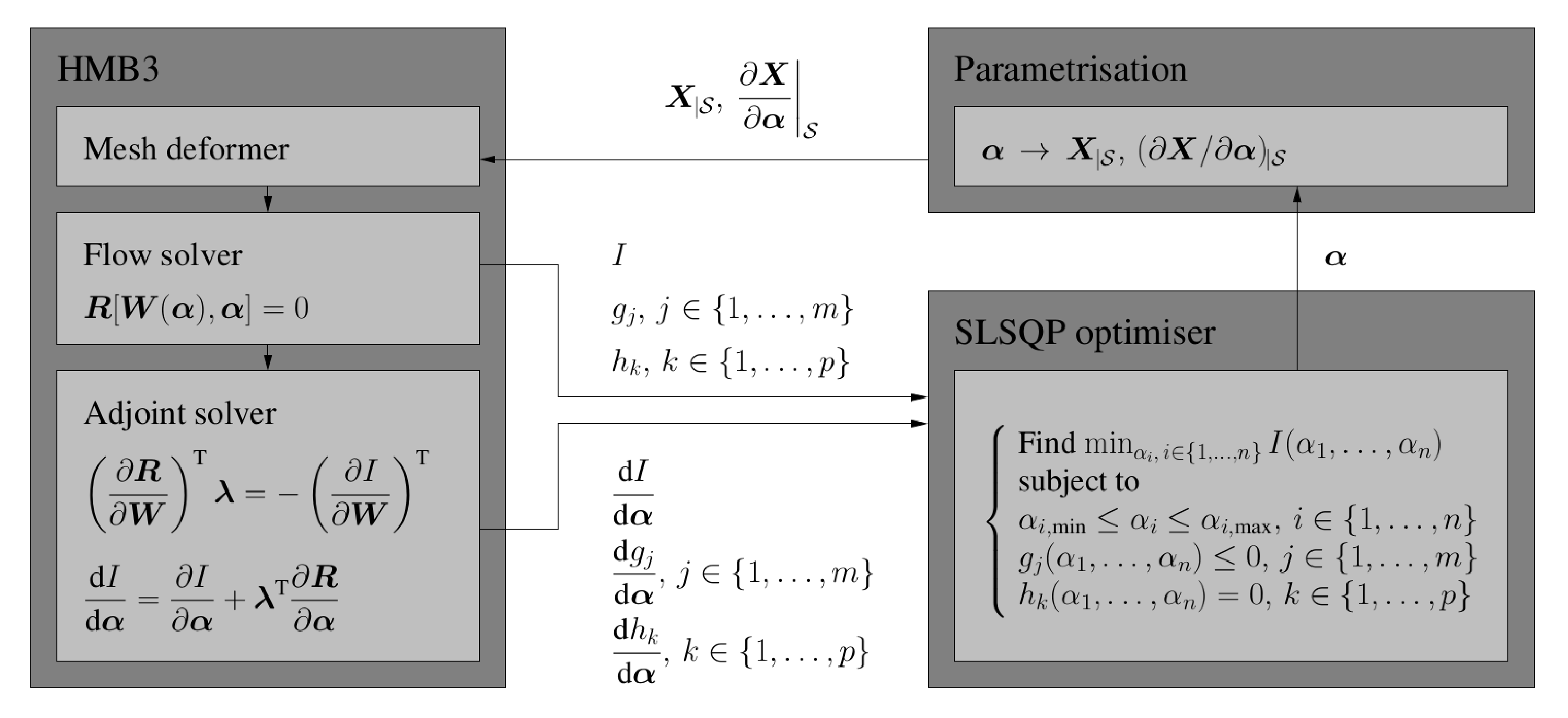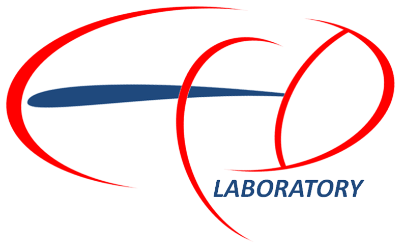eVTOL Propeller Optimisation
The CFD Laboratory of the University of Glasgow collaborated with Vertical Aerospace to assist in designing their VX4 propellers. The VX4 is an Electric Vertical Take-Off and Landing (eVTOL) aircraft with a tilt-rotor configuration, having four tilting front rotors and four fixed rear rotors mounted on the wing.

Vertical Aerospace has performed extensive, in-house, rotor design and testing, with an expected initial flight in 2022. However, due to the complex operating environment, the CFD Lab assisted in the design phase by employing the Adjoint-CFD optimisation methods of HMB3.
Gradient based optimisation is an efficient method for solving aerodynamic shape optimisation problems, since it minmises the required number of flow solutions (Nocedal and Wright, 2006). However, it requries the flow derivatives with respect to the design variables. These become extremely computationally expensive to compute when high fidelity CFD is employed. An aconomic way to obtain these flow gradients with CFD is represented by the adjoint method.
The current implementation of the adjoint problem is solved using a Least-Square Sequential Quadratic Programming (SLSQP) algorithm (Kraft, 1994). This method is intended for problems with a high number of constraints and variables, with the main limitation coming from the computer memory. The algorithm is implemented in a seperate tool and it is interfacted with HMB3 using files for data exchange. The optimisation procedure is shown in the Figure below. Previous use of this procedure has involved ducted propeller (Biava and Barakos, 2016) and helicopter rotor optimisation (Fitzibbon et al, 2021).

The further information on the employed method and tools, please see the referenced publications.

Supported by
Contacts
George Barakos - Professor, George.Barakos@glasgow.ac.uk
Ross Higgins - Research Assistant, Ross.Higgins@glasgow.ac.uk


